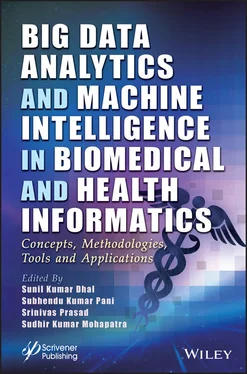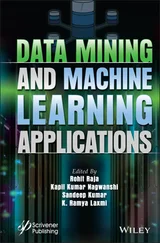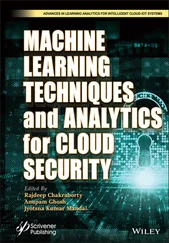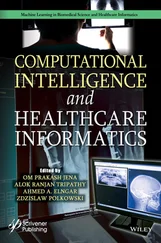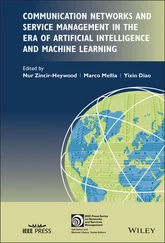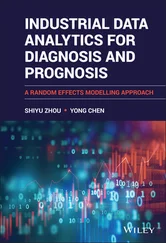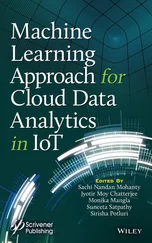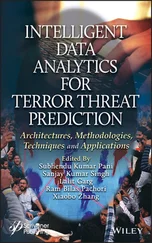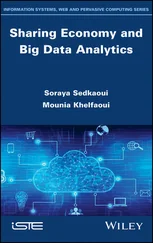1 Cover
2 Title Page
3 Copyright
4 Preface
5 1 An Introduction to Big Data Analytics Techniques in Healthcare 1.1 Introduction 1.2 Big Data in Healthcare 1.3 Areas of Big Data Analytics in Medicine 1.4 Healthcare as a Big Data Repository 1.5 Applications of Healthcare Big Data 1.6 Challenges in Big Data Analytics 1.7 Big Data Privacy and Security 1.8 Conclusion 1.9 Future Work References
6 2 Identify Determinants of Infant and Child Mortality Based Using Machine Learning: Case Study on Ethiopia 2.1 Introduction 2.2 Literature Review 2.3 Methodology and Data Source 2.4 Implementation and Results 2.5 Conclusion References
7 3 Pre-Trained CNN Models in Early Alzheimer’s Prediction Using Post-Processed MRI 3.1 Introduction 3.2 Experimental Study 3.3 Data Exploration 3.4 OASIS Dataset Pre-Processing 3.5 Alzheimer’s 4-Class-MRI Features Extraction 3.6 Alzheimer 4-Class MRI Image Dataset 3.7 RMSProp (Root Mean Square Propagation) 3.8 Activation Function 3.9 Batch Normalization 3.10 Dropout 3.11 Result—I 3.12 Conclusion and Future Work Acknowledgement References
8 4 Robust Segmentation Algorithms for Retinal Blood Vessels, Optic Disc, and Optic Cup of Retinal Images in Medical Imaging 4.1 Introduction 4.2 Basics of Proposed Methods 4.3 Experimental Results and Discussion 4.4 Conclusion References
9 5 Analysis of Healthcare Systems Using Computational Approaches 5.1 Introduction 5.2 AI & ML Analysis in Health Systems 5.3 Healthcare Intellectual Approaches 5.4 Precision Approaches to Medicine 5.5 Methodology of AI, ML With Healthcare Examples 5.6 Big Analytic Data Tools 5.7 Discussion 5.8 Conclusion References
10 6 Expert Systems in Behavioral and Mental Healthcare: Applications of AI in Decision-Making and Consultancy 6.1 Introduction 6.2 AI Methods 6.3 Turing Test 6.4 Barriers to Technologies 6.5 Advantages of AI for Behavioral & Mental Healthcare 6.6 Enhanced Self-Care & Access to Care 6.7 Other Considerations 6.8 Expert Systems in Mental & Behavioral Healthcare 6.9 Dynamical Approaches to Clinical AI and Expert Systems 6.10 Conclusion 6.11 Future Prospects References
11 7 A Mathematical-Based Epidemic Model to Prevent and Control Outbreak of Corona Virus 2019 (COVID-19) 7.1 Introduction 7.2 Related Work 7.3 Proposed Frameworks 7.4 Results and Discussion 7.5 Conclusion References
12 8 An Access Authorization Mechanism for Electronic Health Records of Blockchain to Sheathe Fragile Information 8.1 Introduction 8.2 Related Work 8.3 Need for Blockchain in Healthcare 8.4 Proposed Frameworks 8.5 Use Cases 8.6 Discussions 8.7 Challenges and Limitations 8.8 Future Work 8.9 Conclusion References
13 9 An Epidemic Graph’s Modeling Application to the COVID-19 Outbreak 9.1 Introduction 9.2 Related Work 9.3 Theoretical Approaches 9.4 Frameworks 9.5 Evaluation of COVID-19 Outbreak 9.6 Conclusions and Future Works References
14 10 Big Data and Data Mining in e-Health: Legal Issues and Challenges 10.1 Introduction 10.2 Big Data and Data Mining in e-Health 10.3 Big Data and e-Health in India 10.4 Legal Issues Arising Out of Big Data and Data Mining in e-Health 10.5 Big Data and Issues of Privacy in e-Health 10.6 Conclusion and Suggestions References
15 11 Basic Scientific and Clinical Applications 11.1 Introduction 11.2 Case Study-1: Continual Learning Using ML for Clinical Applications 11.3 Case Study-2 11.4 Case Study-3: ML Will Improve the RadiologyPatient Experience 11.5 Case Study-4: Medical Imaging AI with Transition from Academic Research to Commercialization 11.6 Case Study-5: ML will Benefit All Medical Imaging ‘ologies’ 11.7 Case Study-6: Health Providers will Leverage Data Hubs to Unlock the Value of Their Data 11.8 Conclusion References
16 12 Healthcare Branding Through Service Quality 12.1 Introduction to Healthcare 12.2 Quality in Healthcare 12.3 Service Quality 12.4 Conclusion and Road Ahead References
17 Index
18 End User License Agreement
1 Chapter 1 Figure 1.1 Big data in healthcare. Figure 1.2 Five vs of big data. Figure 1.3 Areas of big data analytics in medicine.
2 Chapter 2 Figure 2.1 Overall of missing values. Figure 2.2 Boruta features importance result. Figure 2.3 Top twenty features ranked by random forest. Figure 2.4 Class distribution before applying sampling techniques. Figure 2.5 C5.0 rule-based decision tree.
3 Chapter 3Figure 3.1 Human brain and neurons.Figure 3.2 Brain atrophy variations of T1 (longitudinal relaxation time), (a) at...Figure 3.3 Extracting volume of brain by image processing.Figure 3.4 Structural MRI images representing different AD stages. (a) Mild deme...Figure 3.5 Age vs demented and non-demented.Figure 3.6 MMSE.Figure 3.7 nWBV.Figure 3.8 eTIV.Figure 3.9 ASF.Figure 3.10 AGE.Figure 3.11 EDUC.Figure 3.12 Non demented, demented and converted demented MRI count.Figure 3.13 Polynomial regression of SES and EDUC.Figure 3.14 Features to be used.Figure 3.15 Ensemble learning.Figure 3.16 Random forest tree of early Alzheimer’s detection.Figure 3.17 Confusion matrix.Figure 3.18 Pre-processing Transverse. (a) Raw/original image. (b) Skull-strippi...Figure 3.19 Smoothing of a Raw MR Imaging.Figure 3.20 Alzheimer’s 4-class images information.Figure 3.21 Classification objective.Figure 3.22 Fully connected CNN.Figure 3.23 Flowchart of proposed model.Figure 3.24 8-layered AlexNet architecture.Figure 3.25 VGG16 architecture with 16 layers.Figure 3.26 Inception module.Figure 3.27 GoogLeNet.Figure 3.28 ResNet architecture with skip connections running parallel.Figure 3.29 MobileNetV2 architectural representation.Figure 3.30 Neural Architecture Search (NASNet).Figure 3.31 ROC curve and predictions.Figure 3.32 Machine Learning Algorithms Comparison.Figure 3.33 Predicting the Alzheimer’s progression: (a) Nondemented (99.13%), (b...Figure 3.34 Validation status.Figure 3.35 Confusion matrix.Figure 3.36 Metric measures of MobileNetV2 during training and validation.
4 Chapter 4Figure 4.1 Image segmentation techniques.Figure 4.2 Process for identifying and detecting retinal diseases.Figure 4.3 Extraction of gray-scaled green channel of image taken from DRIVE dat...Figure 4.4 Input image passing through different pre-processing stages. (a) Inpu...Figure 4.5 Output image of pre-processing stage passing through different phaseb...Figure 4.6 Output of images of segmentation stage with various options [18].Figure 4.7 Segmented image of proposed method [18] vs gold standard image for CH...Figure 4.8 ROI extraction of proposed method [34] on a given input image taken f...Figure 4.9 Results of OD segmentation of proposed method [34].Figure 4.10 Results of OC segmentation of proposed method [34].
5 Chapter 5Figure 5.1 Neural Network and Fuzzy Systems (NNFS) development contains five ste...Figure 5.2 Methodology of ML for healthcare data analytics.Figure 5.3 Use ML algorithms for several evaluation analyses based on storage da...Figure 5.4 Conceptual architecture of big data analytics for health informatics.Figure 5.5 Hadoop system architecture.Figure 5.6 MapReduce procedure.
6 Chapter 6Figure 6.1 Framework of AI.Figure 6.2 Basic framework of an expert system.
7 Chapter 7Figure 7.1 Representing of infection spreading in COVID-19.Figure 7.2 (a) Initially all nodes are healthy with black color.Figure 7.2 (b) After attacking, virus nodes are represented in red color. (c) In...Figure 7.2 (d) Virus transmission without social distance leads to more red colo...Figure 7.2 (f) Deploying antivirus in some nodes which are healthy and represent...Figure 7.2 (h) Antivirus will spread over a period of time then slowly red will ...Figure 7.2 (j) Sample out of proposed model for population 200.Figure 7.3 (a) Covid spreading without social distancing, clearly shows that eff...Figure 7.3 (b) Covid spreading with social distancing, clearly shows that effect...
Читать дальше
